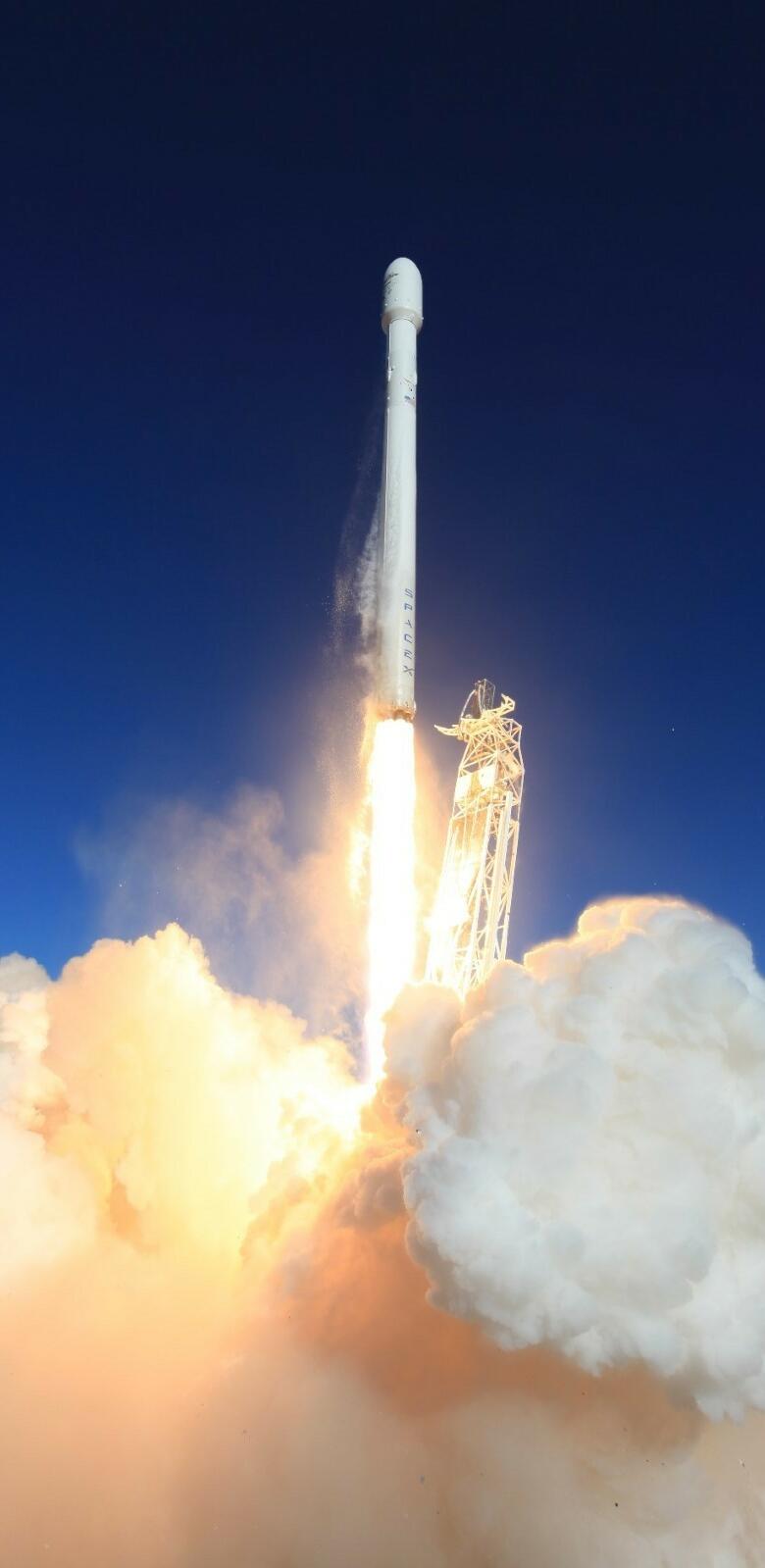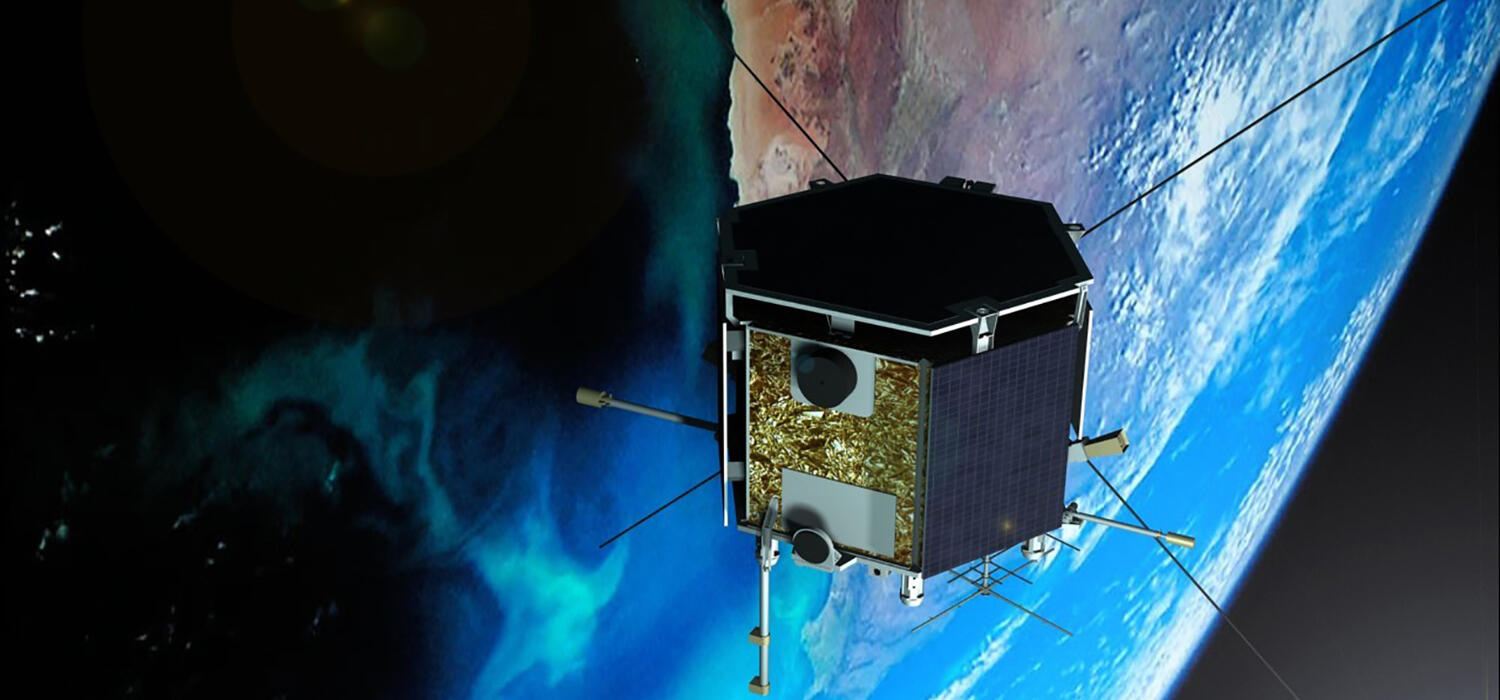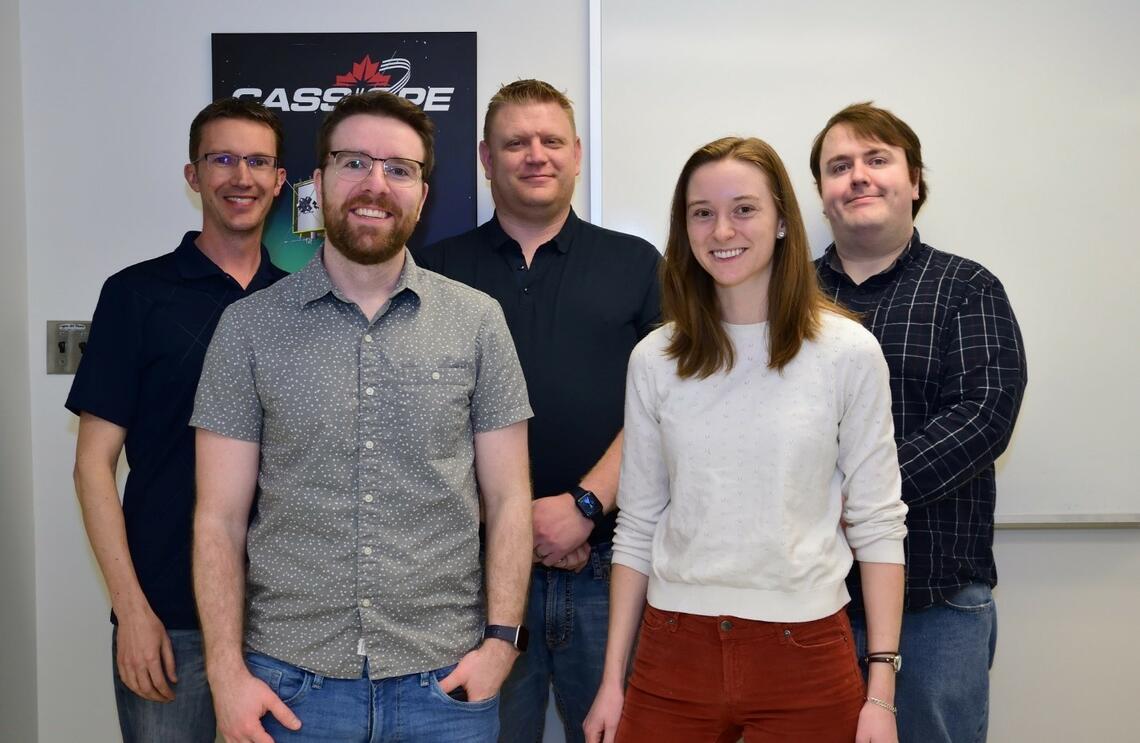
CASSIOPE launch from Vandenberg Space Force Base, Calif., Sept. 29, 2013.
SpaceX
Sept. 29, 2023

It’s a day of celebration for those involved in the success of the CASSIOPE (Cascade, Smallsat and Ionospheric Polar Explorer) satellite. Today marks 10 years in space for the scientific satellite that was conceived, researched and operated by the University of Calgary.
The original plan for the mission was for the CASSIOPE satellite to orbit for 18 months. Despite several of the instruments inevitably degrading over the years, scientists have found a way to repurpose the satellite so it collects cutting-edge data that’s in demand by companies and organizations around the world.
“Ten years is a really significant event,” says Andrew Howarth, MSc ’06, the project and operations manager of UCalgary’s CASSIOPE satellite. “To be still operating and taking good data that people are interested in 10 years later is a testament to both the build quality of the spacecraft and the determination to keep it operating and to keep it relevant.”

CASSIOPE launch from Vandenberg Space Force Base, Calif., Sept. 29, 2013.
SpaceX
On Sept. 29, 2013, the CASSIOPE satellite was launched from the Vandenberg Space Force Base in California. On board were eight instruments — collectively called the Enhanced Polar Outflow Probe (e-POP) — with the aim of gathering information to better understand the science of space weather.
The satellite orbits the earth 14 times a day, travelling close to 27,000 kilometres an hour. It’s unique in the world of scientific satellites in that it has an elliptical, rather than circular, orbit. At its highest distance CASSIOPE flew 1,500 km above the ground, though this distance gets lower and lower every day and currently the satellite sits around 1,100 km altitude. The satellite’s lowest distance is 325 km.
“We’re not the first people studying space weather, or flying instruments to study it, but what is unique about e-POP is that it was conceived and developed into an extremely low-cost satellite,” says Dr. Andrew Yau, PhD, a professor in physics and astronomy and the principal investigator of the CASSIOPE satellite project.
“As well, we are using several instruments that are taking totally unique measurements that other folks haven’t done before.”
The instruments that make up e-POP include auroral imagers, particle sensors, radio wave and GPS receivers and more to help understand what’s happening in the earth’s upper atmosphere. The goal of the mission is to study the underlying physics of space weather and the impact it has on the ground. Space weather affects everything from the aurora to things that deeply impact our day-to-day life, like radio communications and the operation of GPS.
“When the sun starts doing interesting things, that energy that is moved from the sun to the earth affects the earth’s space environment,” says Howarth. “Our satellite is taking data to help scientists understand what these processes are and how we can predict them. “
Yau explains that he views that mission as “very lucky and successful.”
“When I talk to my colleagues in the Unites States, they’re always surprised e-POP has lasted so long,” he says, laughing.
Instruments, though, naturally degrade. A few years into the mission, one of the instruments lost its ability to measure energy distributions. Later, the mission lost its ability to point the spacecraft in different directions. That means the auroral imager is now confined to certain directions and never sees the earth’s surface.
Those behind CASSIOPE used this opportunity to morph the mission into one that collects data much needed in 2023 — and beyond.
“Instead of using the camera to take pictures of the aurora, we’re taking pictures of space debris that is flying around in lower earth orbits. That’s active satellites, broken down satellites, old pieces of satellites that have broken into hundreds or thousands of pieces,” says Howarth.
Because fast internet means there are now thousands more satellites orbiting the earth, the demand for data in this field is growing at a spectacular rate. Collisions between satellites are becoming more likely and at the same time, it’s becoming harder to monitor the situation from the ground.
“Now that we’re getting more debris, it’s becoming difficult to keep your satellite safe,” says Howarth. “A hot topic nowadays is figuring out how we can detect this debris and have automatic systems of moving the spacecraft out of the way. It’s an emerging field that we’re able to provide data for.”

CASSIOPE operations staff at UCalgary, from left, back to front: Andrew Howarth, Andrew White, Warren Holley, Troy Kachor, Paige Rutledge.
University of Calgary files
UCalgary is the first Canadian university to lead a full-fledged scientific satellite mission — a significant accomplishment that those involved are celebrating on its 10-year anniversary.
“The University of Calgary has been involved in this project from conception to design to launch and operations. To be able to train and equip personnel through that entire process is really quite unique. Not very many university environments are involved in the entire cradle-to-grave journey of a satellite mission,” says Howarth.
Yet those behind the successful CASSIOPE mission aren’t stopping here. They see the success of this mission as a springboard into the next satellite project, which is called RADICALS (RADiation Impacts on Climate and Atmospheric Loss Satellite) and is led by professor Ian Mann at the University of Alberta. The mission’s goal is to assess the effects of space radiation on earth’s climate.
“This is yet another space science satellite led by this province,” says Yau. “I think that’s something we can all be proud of.”
The CASSIOPE/e-POP mission is a collaborative effort by researchers from several Canadian and foreign universities and research institutes, as well as Canadian industry. Funding for the mission has been provided by Innovation, Science and Economic Development Canada, the Canadian Space Agency, MDA, and the European Space Agency.